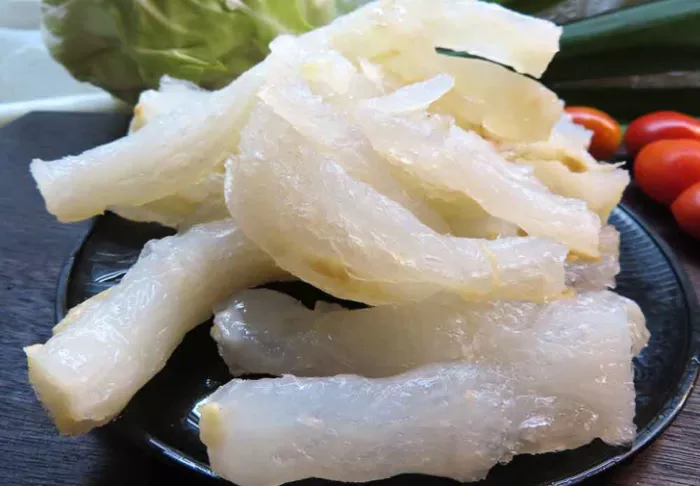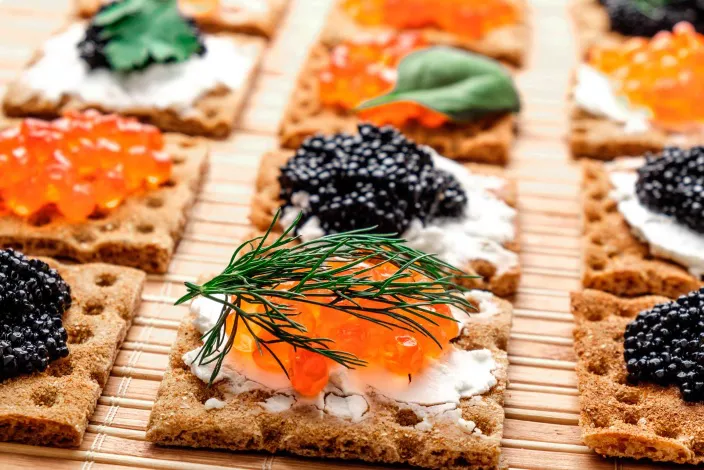Dried pork tendon, a staple in Chinese cuisine, is a delicacy known for its unique texture and rich flavor. Prepared correctly, this ingredient can elevate a dish to new heights, offering a delightful chewiness and a satisfying taste. In this comprehensive guide, we will delve into the world of Chinese-style dried pork tendon, from selecting the best quality tendons to mastering the cooking techniques that bring out their best qualities.
Understanding Dried Pork Tendon
Dried pork tendon, also known as “pork tendon thread,” is derived from the connective tissue of pork, specifically the tendons that surround muscles. After an extensive drying process, these tendons become firm and hard, transforming them into a versatile ingredient with a rich, umami flavor. In Chinese cuisine, they are prized for their unique texture, which is simultaneously chewy and tender.
Choosing High-Quality Dried Pork Tendon
Selecting the right dried pork tendon is the first step toward a successful culinary experience. Look for tendons that are light brown in color and have a uniform texture. Avoid tendons with dark spots or discoloration, as these may indicate spoilage or improper drying. It’s essential to purchase tendons from a reputable source to ensure their quality and safety.
Preparing Dried Pork Tendon for Cooking
Before cooking dried pork tendon, it must be rehydrated to soften its texture and make it suitable for consumption. Follow these steps to prepare dried pork tendon for cooking:
Soaking: Place the dried pork tendon in a bowl of cold water and let it soak for at least 8 to 12 hours, or overnight. This extended soaking time allows the tendons to fully rehydrate and become pliable.
Rinsing: After soaking, rinse the tendons thoroughly under cold running water to remove any impurities or remaining debris.
Cutting: Once the tendons are rehydrated and cleaned, cut them into manageable lengths, usually around 3 to 4 inches. This step makes them easier to work with and ensures even cooking.
Choosing the Right Cooking Method
Chinese-style dried pork tendon can be prepared in various ways, each offering a unique texture and flavor profile. Some popular cooking methods include:
Braising: Braising is a slow-cooking technique where the tendons are simmered in a flavorful liquid, often with soy sauce, ginger, garlic, and other aromatic ingredients. This method yields tender, succulent tendons with a rich, savory sauce.
Stir-Frying: Stir-frying involves quickly cooking the tendons in a hot wok or skillet with a mix of vegetables, sauces, and seasonings. This method results in a slightly crispy exterior and a chewy interior.
Steaming: Steaming dried pork tendon is a gentle method that preserves its natural texture. It’s often used in soups and dim sum dishes, where the tendons are steamed until tender and then incorporated into the final dish.
Stewing: Stewing is similar to braising but involves longer cooking times. The tendons are simmered in a flavorful broth until they become exceptionally tender and absorb the surrounding flavors.
Cooking Dried Pork Tendon: Braised Tendon Recipe
One of the most popular ways to cook dried pork tendon is through braising. Here’s a simple recipe to get you started:
Ingredients:
200g dried pork tendon
2 cups water (for soaking)
2 cups chicken or pork broth
3 slices of ginger
2 cloves of garlic, minced
2 tablespoons soy sauce
1 tablespoon oyster sauce
1 tablespoon Shaoxing wine (Chinese rice wine)
1 tablespoon sugar
1 star anise
Salt and pepper to taste
Chopped scallions and cilantro for garnish
Instructions:
Begin by soaking the dried pork tendon in a bowl of cold water for 8 to 12 hours or overnight. Make sure the tendons are fully submerged.
Once rehydrated, rinse the tendons under cold running water to remove any impurities.
In a pot of boiling water, blanch the tendons for about 5 minutes. This step helps remove any residual impurities and softens the outer layer of the tendons.
Drain the tendons and set them aside.
Heat a wok or deep skillet over medium heat. Add a splash of oil and sauté the ginger and minced garlic until fragrant.
Add the drained tendons to the wok and stir-fry for a few minutes, allowing them to absorb the flavors.
Pour in the soy sauce, oyster sauce, and Shaoxing wine, and stir to coat the tendons evenly.
Add the chicken or pork broth, sugar, and star anise. Bring the mixture to a boil.
Reduce the heat to low, cover the wok or skillet, and simmer for about 2 to 3 hours, or until the tendons become tender. Check periodically and add more water if needed to prevent sticking or burning.
Once the tendons are tender and the sauce has reduced to your desired consistency, season with salt and pepper to taste.
Garnish with chopped scallions and cilantro before serving.
Serve the braised dried pork tendon as a standalone dish or incorporate it into other recipes, such as noodle soups or stir-fry dishes.
Exploring Flavor Variations
While the braised dried pork tendon recipe above offers a traditional flavor profile, you can experiment with different ingredients and seasonings to create variations that suit your taste preferences:
Spicy Tendon: Add dried chili peppers or chili oil for a spicy kick.
Herbal Tendon: Incorporate Chinese herbs like goji berries, dang shen, or huang qi to infuse the tendons with herbal notes.
Citrusy Tendon: Enhance the flavor with citrus zest from ingredients like orange or tangerine peel.
Sweet and Sour Tendon: Create a sweet and sour sauce using vinegar, sugar, and ketchup for a tangy twist.
Serving and Presentation
Dried pork tendon dishes are often presented in a visually appealing manner. To elevate the presentation:
Arrange the cooked tendons neatly on a platter or individual plates.
Garnish with fresh herbs, such as cilantro or parsley, for a burst of color and freshness.
Add thin slices of scallion greens or red chili pepper rings for a pop of contrasting color and flavor.
Serve with a side of steamed rice or noodles to complement the dish.
Conclusion
Mastering the art of cooking dried pork tendon Chinese style opens up a world of culinary possibilities. The tender yet chewy texture and rich umami flavor of properly prepared tendons can enhance a wide range of dishes, from hearty soups to stir-fried delights.
























